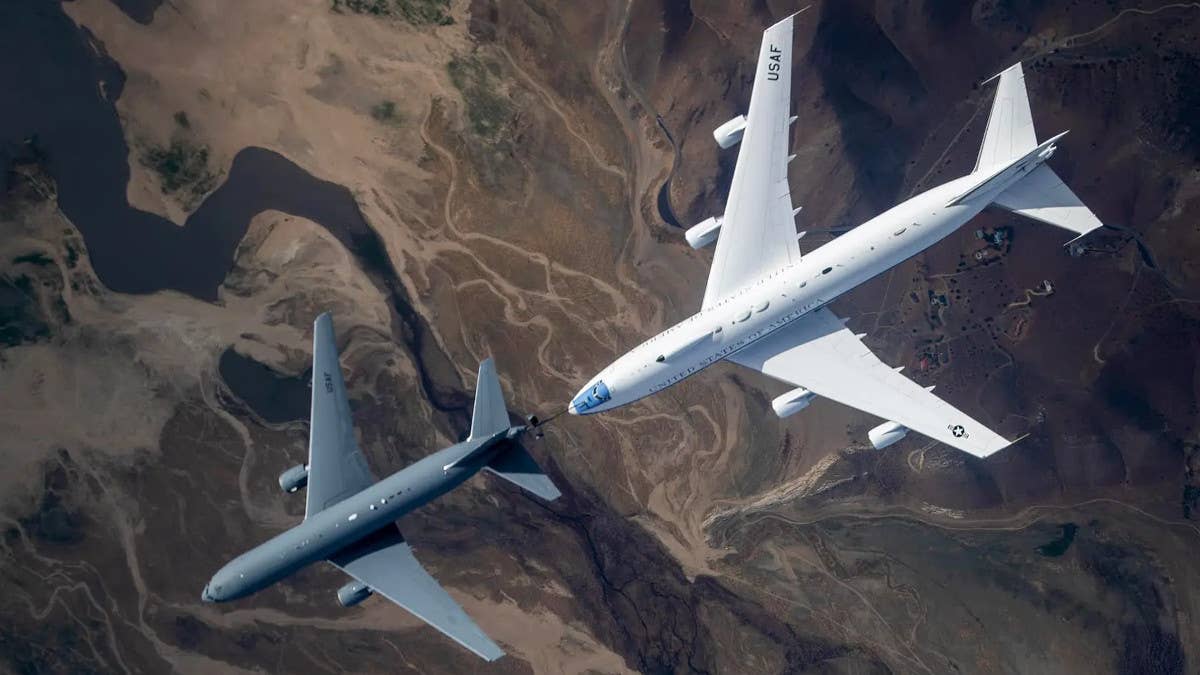Two sources familiar with the situation said Boeing - the incumbent manufacturer of the E-4B - and the Air Force were unable to come to an agreement on data rights and contract terms, with the U.S. plane maker refusing to sign onto any fixed-price agreement that locks it into paying costs above an agreed limit.
Boeing's defense unit has lost $1.3 billion this year on fixed-price development programs that include NASA's Starliner and the next Air Force One. It has lost $16.3 billion on fixed-price programs since 2014, according to a Reuters review of Boeing's regulatory filings.
Boeing leaders have sought to prove to investors that the company is seeking more advantageous contract terms in future deals with the Pentagon.
"Rest assured, we haven't signed any fixed-price development contracts nor (do we) intend to," Brian West, Boeing's chief financial officer, said in October.
While typically used to transport the U.S. secretary of defense, the E-4B is designed as a mobile command post capable of withstanding nuclear blasts and electromagnetic effects, allowing U.S. leaders to deliver orders to the military in the event of a national emergency.
The Air Force currently operates four E-4B aircraft with at least one on alert at all times. The fleet of highly-modified Boeing 747-200 jumbo jets date from the 1970s, and have become increasingly difficult and expensive to maintain as parts become obsolete.
The E-4B is expected to reach the end of its service life in the early 2030s.
__________________________________________________________________________
UPDATE: From a Boeing spokesperson to The War Zone confirming the company is no longer competing for the SAOC contract:
“We are approaching all new contract opportunities with added discipline to ensure we can meet our commitments and support the long-term health of our business. We remain confident our SAOC approach is the most comprehensive, technically mature and lowest-risk solution for the customer and Boeing. Our proposal is based on 60 years of military commercial derivative aircraft knowledge and experience including the design, development, and sustainment of the E-4B Nightwatch, which currently serves the national security command and control mission.”
Boeing Exits Air Force’s ‘Doomsday Plane’ Competition (Updated)
The ejection of Boeing from the Survivable Airborne Operations Center competition would leave Sierra Nevada Corporation poised for success.
- According to a recent report from Reuters, Boeing told the news agency that the Air Force has “eliminated” it from the SAOC competition.
- Valued at over $8 billion over the next five years, a contract award for SAOC is expected in early 2024.
This would appear to leave the privately owned SNC as the only company still in contention for SAOC. The Air Force would not confirm or deny to Reuters whether or not any other firms were now involved.
“We cannot discuss an active source selection and detailed program information is classified,” an Air Force spokesperson told the news agency.
- Namely, Boeing and the Air Force “were unable to come to an agreement on data rights and contract terms, with the U.S. plane-maker refusing to sign onto any fixed-price agreement that locks it into paying costs above an agreed limit.”
- In a comment seemingly at odds with it being “eliminated” from the SAOC competition, the company added: “We remain confident our SAOC approach is the most comprehensive, technically mature, and lowest-risk solution for the customer and Boeing.”
If Boeing is really out of the competition, it seems likely that the company’s relatively terrible experience with previous fixed-price agreements was a critical factor in the decision.
This year alone, Boeing’s defense unit has reportedly lost $1.3 billion on fixed-price development efforts, including the high-profile VC-25B Presidential Airlift Replacement program, which you can read more about here. Other programs include the T-7 trainer, KC-46 tanker, MQ-25 carrier-based tanker drone, and MH-139 support helicopter, all of which have cratered profitability. Stretching back to 2014, the company has lost $16.3 billion on fixed-price programs.
In October this year, in an apparent effort to reassure its investors, Boeing’s chief financial officer, Brian West, confirmed that the company had not signed any more fixed-price development contracts, nor would it in the future.











No comments:
Post a Comment